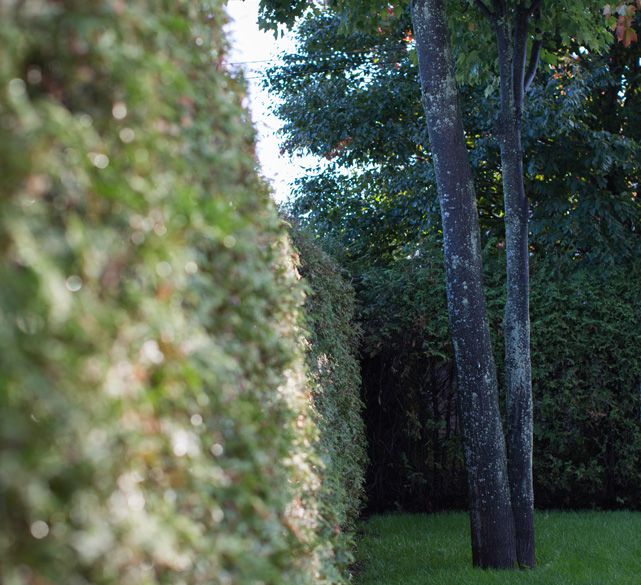Determining the best time to trim your cedar hedge isn’t always easy. Not to mention that certain techniques should be used if you want to keep it healthy. Different steps must be followed depending on the time of year when the hedge is being trimmed.
Spring pruning
As soon as sunny days return, it is important to start taking care of your cedar hedge to ensure that it grows well during summer. You should first use a small leaf rake or a lawn rake to remove any dead branches and needles that have fallen under the hedge. This will leave room for new branches to grow.
You can also add compost, peat soil or fertilizer to allow the hedge to get all the nutrients it needs. Simply spread it on the ground underneath the branches.
In early spring, trim branches based on the length of the shortest ones. However, go easy on the tallest branches if you want your hedge to grow to its full height. Similarly, trim the sides slightly to help it grow in all directions. If you don’t feel comfortable trimming the hedge yourself, there are companies that specialize in this field of activity.
Summer maintenance
During the months of June and July, trim your hedge every time it grows 6” (15 cm). If not trimmed often enough, the situation can quickly get out of control. Keeping the base of the hedge slightly wider than the upper part is recommended to help snow fall more easily to the ground during winter. Your cedar hedge will also look much fuller at the base. Make sure not to trim more than one-third of the hedge every year.
Watering the hedge on a regular basis allows its roots to go deeper and collect the minerals it needs. Additionally, this will help decrease the amount of time spent caring for your yard as cedar hedges lose fewer needles when they get a lot of water. You can also direct water from a downspout to your hedge to make watering easier. Use a downspout extension for that specific purpose.
Light maintenance in the fall
As winter draws near, you should avoid trimming your hedge as new shoots and branches that are cut could be damaged by snow. Trimming your hedge after the end of July in Canadian regions with the most snowfall, and after September in other areas is not recommended.
However, your hedge will be at its fullest if you water it on a regular basis. Watering your hedge before freezing temperatures settle in will prevent it from losing needles, thereby keeping it as full as possible. If you continue to water the hedge regularly every fall, fallen needles will hardly be noticeable.
Protecting your hedge in the winter time
If you live near a busy street, covering your hedge is preferable. This will avoid problems such as damage due to salt, especially if it is a young hedge.
During heavy snowfalls, remove snow from the upper part of the hedge to make sure that branches don’t bend or break under the added weight. Young cedar hedges should receive even more attention as they are still fragile.
